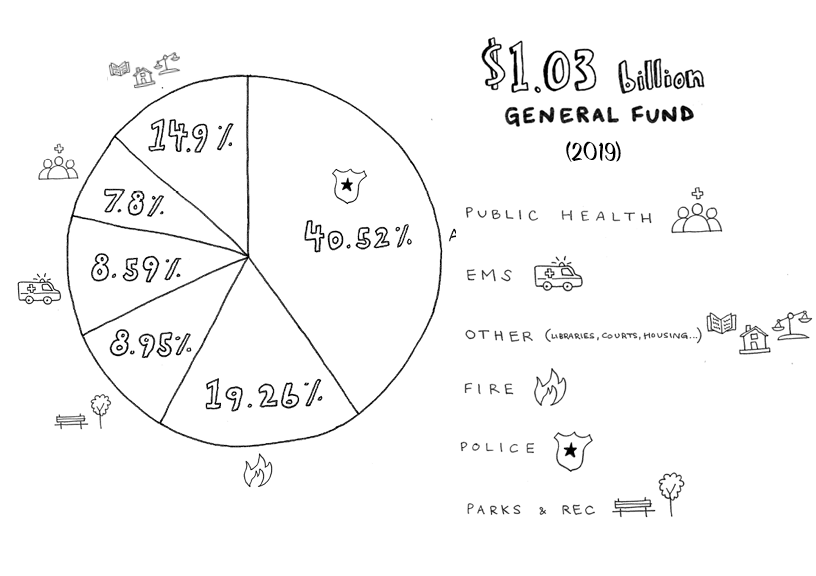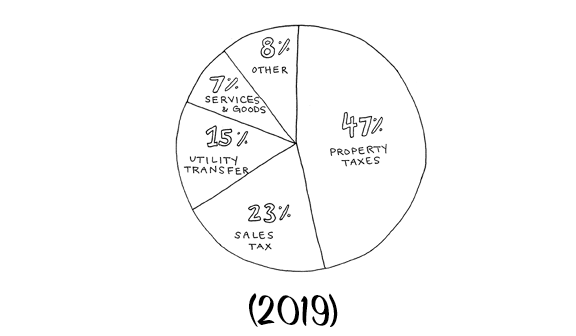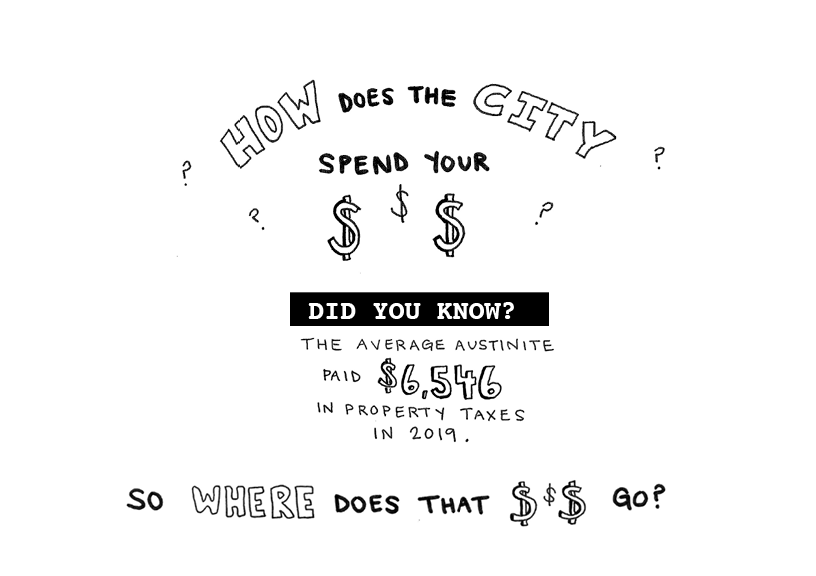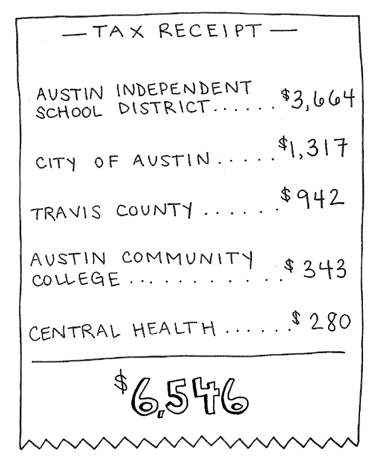What is your #1 concern, worry, or fear about Austin and its future?
Wish we were doing more to address climate change? Or to protect families against displacement and gentrification?Think our parks could use a bit more love and support?
It’s August, which means now is the time to talk about it. Every year around this time, Austin City Council approves a new budget for the upcoming year and these are the kinds of questions that get raised. A budget is essentially a list of a city’s values and priorities for the next 12 months (and beyond).
So where is Austin planning on investing its time and money in 2020?
Earlier this month, the City Manager released an initial draft $4.2 billion budget for the new year. A budget that big is also pretty long, but some highlights include:
- An historic $62.7 million in support of ending homelessness in Austin (that’s $17 million more than was spent this year).
- Final phase of the Curbside Composting rollout (with a total operating budget of $4.5 million)
- $7 million for health equity programs and community engagement activities
- $1.9 million for the Office of Sustainability to reduce the impacts of climate change and foster a more resilient community
- Installation of 100 electric vehicle charging stations ($1 million)
- $2.5 million to manage rising wildfire risks that exist as a result of climate change
- 30 police officers for year 2 implementation of the Police Department staffing plan
- 32 victim services counselors to support victims, their families, and first responders experiencing trauma, an increase of two positions from the prior year
- $1.4 million for the Vision Zero program, with the goal of eliminating deaths and serious injuries from traffic collisions to zero by 2025
- Historic funding of $14.4 million for the Housing Trust Fund in support of permanent supportive housing, housing rehabilitation, and land acquisition for affordable housing
- $200,000 to conduct a Quality of Life Study for people with disabilities
You can look through a full list of budget highlights here, or if you’ve got a bit more time on your hands, read through the entire city budge here.
If the budget passes as proposed, the average Austinite can expect their property tax bill to rise by about $100 next year.
So what comes next?
Now that the City Manager has released a draft budget and draft funding recommendations, it’s time for City Council (and all of us) to have the final say. City Council is hosting a public hearing on the budget on Wednesday, August 28th at 6pm. If you’ve got any thoughts on what should go in the final budget, the public hearing is the time to share them!
Still don’t quite understand what this whole thing is all about? In partnership with A Functional Democracy, we’ve created a little civic explainer on the city’s budget to give you a bit more context. You can look through it below.
(PS – Special thanks to AEN Intern Kourtney Tams who did all of the illustrations below and to AEN Intern Hayley Wood who helped with layout.)
Did you know? Not all of the money you send to the Austin Independent School District (AISD) actually ends up with the school district. In 2018, only about 59 percent of the average Austinite’s school property taxes went to AISD. The other 41 percent went to the State of Texas in a process known as recapture.
The goal of recapture is to redistribute money from “property-rich” districts like Austin to “property-poor” districts in order to equalize education spending across the state. (Sometimes the program is also called Robin Hood for this reason.)
AISD has long raised concerns with this system, saying it’s outdated, takes too much funding away from Austin, and limits AISD’s ability to address the needs of all its students.
Responding to these concerns (and those raised by other school districts across the state) the Texas Legislature passed a law making some changes to the school finance system in 2019. Because of this, AISD projects that in 2020, the school district will send $612 million of our property tax dollars to the state for recapture, a reduction of $182 million from the previous system.
Next, we’re just going to focus on the City of Austin… So how does the city spend your money?

This fancy chart above shows how all of the city’s $4.08 billion operating budget was spent in 2019.
About half of the money went to our city’s two publicly-owned utilities – Austin Energy and Austin Water. The majority of the money for Austin Energy and Austin Water isn’t coming from our property taxes, but from our electric and water bills. In 2019, the average Austinite paid $1,040 to Austin Energy and $969.48 to Austin Water.
The other big chunk of the operating budget (about 25 percent) is called the General Fund… and it’s pretty much where all the fun happens. The $1.03 billion General Fund houses the budgets for the city’s big departments – parks and rec, police, fire – and is where real decisions have to be made on which programs/outcomes we can afford to fund and which ones we can’t.
In other words, the General Fund budget is all about priorities. When you follow news reports about the city’s budget, they’ll mostly be talking about the General Fund.

So where does all of this general fund money come from?
When budget season comes around, we talk a lot about property taxes, but they aren’t the only place where General Fund revenue comes from. As you can see in our little chart below, about 23 percent comes from the city’s sales tax.
Another 15 percent comes from Austin Energy and Austin Water in something called “the transfer.” This money is essentially a profit dividend (like the kind that would be doled out to shareholders at a private company), but since our utilities are publicly-owned, the profits get shared back with us, helping to pay for city services like police, fire, parks, and libraries.

Because this is your money! Imagine allowing Amazon to take $1,000 out of your account and then delivering you $1,000 worth of random stuff… without any of your input. That would be crazy!
And because helping the city decide where it spends its money is one of the most impactful ways to influence policy over the long-term. Worried that musicians can no longer afford to live in Austin? Sad because there aren’t enough parks in your neighborhood? Frustrated about the rise of gentrification and displacement in Austin? All of these issues are impacted by the budget.
And last but not least, because your voice really does matter. Like we said earlier, budgets are all about priorities. City Council doesn’t have an unlimited pool of money to spend on everything the community is asking for, which means that they have to make tough decisions, decisions that are often influenced by people calling and emailing their offices in the weeks leading up to their final vote.
Interested in learning more about the city’s budget? RSVP to attend the “4th Annual Budget Party” on Thursday, August 29th from 6pm to 9pm at the Capitol Factory. Hosted by the Austin Monitor, Open Austin, the Austin Tech Alliance, and A Functional Democracy, this event will allow Austinites to explore our city’s budget using an interactive app and fun coloring book pages.




